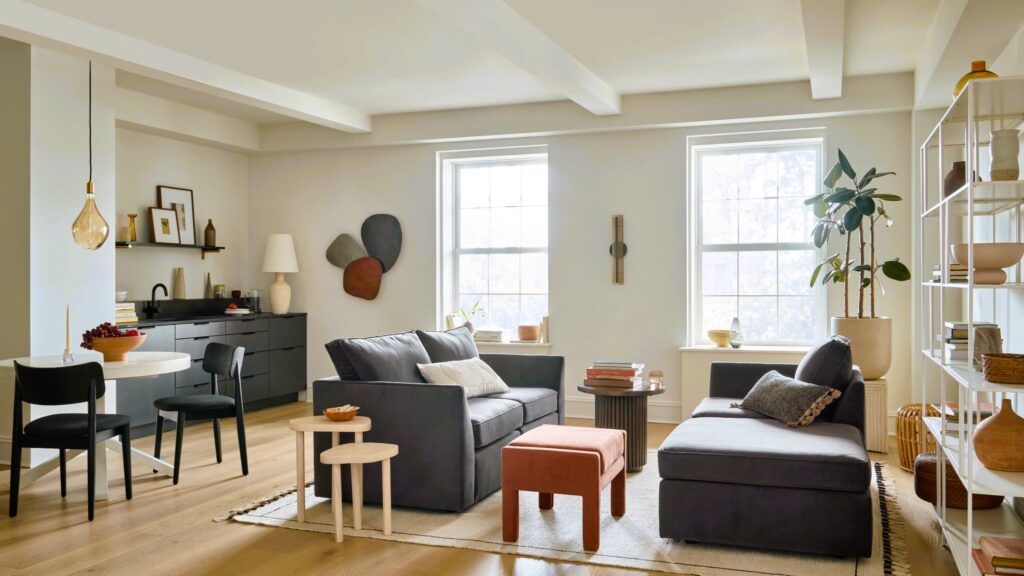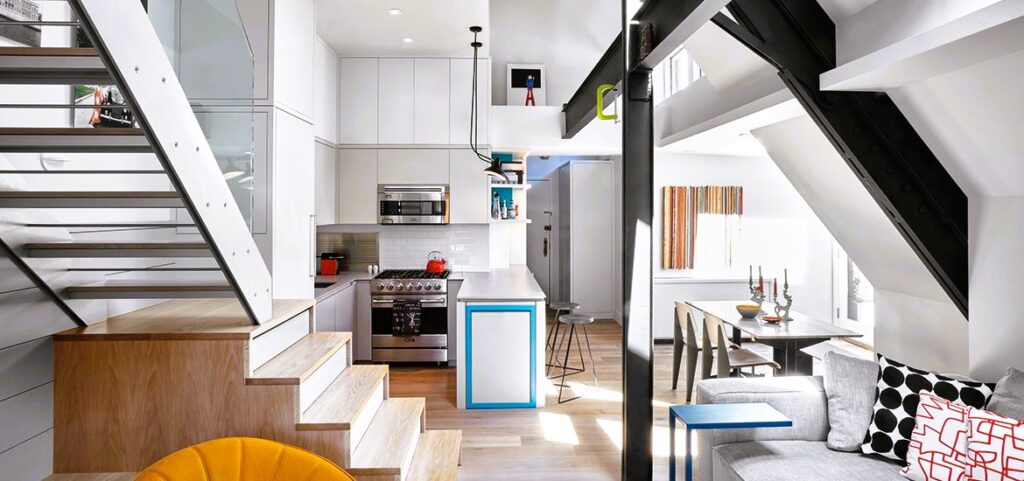Living in a compact space doesn’t mean compromising on style or comfort. In fact, small rooms provide an opportunity to get creative and make a big impact with thoughtful design choices. Whether you’re living in a cozy apartment, a tiny house, or just have a few small rooms in your home, this article will guide you through strategies to maximize style and functionality in limited spaces.
1. Efficient Furniture Selection
- A. Multi-Functional Pieces: Opt for furniture that serves multiple purposes. A sofa bed, a fold-out desk, or a coffee table with storage can transform your space without cluttering it.
- B. Compact Scale: Choose furniture with a smaller footprint. Consider apartment-sized sofas, slim-profile chairs, and nesting tables.
- C. Floating Furniture: Mounting furniture, such as floating shelves and wall-mounted desks, creates an illusion of space by keeping the floor clear.
Explore this Wikipedia article to learn more about the concept of small space living, its history, and its implications for design.
2. Neutral Color Palette

Opt for a neutral color palette as your base. Light colors create an airy and open feeling, making a room appear larger. Use pops of color as accents to add visual interest.
3. Strategic Lighting
- A. Natural Light: Maximize natural light by keeping windows unobstructed. Use sheer curtains to allow light in while maintaining privacy.
- B. Ambient Lighting: Use multiple light sources to evenly illuminate the space. Floor lamps, wall sconces, and pendant lights create a cozy atmosphere.
- C. Mirrors: Place mirrors strategically to reflect light and give the illusion of more space. A large mirror can instantly open up a room. In the article about Shop window shopping, we will take you on a journey into the world of window materials.
4. Smart Storage Solutions
- A. Vertical Storage: Utilize vertical space with tall bookshelves, cabinets, or wall-mounted storage units.
- B. Hidden Storage: Choose furniture with hidden storage compartments to keep clutter out of sight.
- C. Under-Bed Storage: Invest in beds with built-in storage drawers or use storage containers under the bed.
5. Minimalist Approach
Adopt a minimalist design approach to avoid overcrowding. Keep decor simple and functional, allowing each piece to have a purpose.
6. Multi-Use Rooms
If you’re dealing with limited rooms, consider multi-use spaces. A guest room could double as a home office, or a dining area could also serve as a workspace.
7. Link to Standards: Canada.ca – Small Spaces
Explore this official government resource to understand tax implications and regulations related to running a business from a small space.
8. Vertical Design Elements
Use vertical design elements to draw the eye upward. Vertical stripes on walls or tall, floor-to-ceiling curtains can create the illusion of height.
9. Statement Pieces
Opt for one or two statement pieces that capture attention without overwhelming the space. A bold rug, a vibrant piece of artwork, or a unique light fixture can serve as a focal point.
10. Thoughtful Layout

Plan your layout carefully. Consider traffic flow and arrange furniture in a way that maximizes space while maintaining functionality.
11. Greenery and Nature
Introduce indoor plants to add a touch of nature and freshness. Hanging plants or small potted plants can brighten up any corner.
12. Stay Organized
Regularly declutter and organize your space. Keep surfaces clear to maintain a clean and open feel.
In conclusion, small spaces can indeed make a big impact when approached with creativity and thoughtful design. By selecting efficient furniture, utilizing clever storage solutions, and embracing a minimalist design philosophy, you can transform compact rooms into stylish and functional havens that reflect your personal taste and lifestyle.

